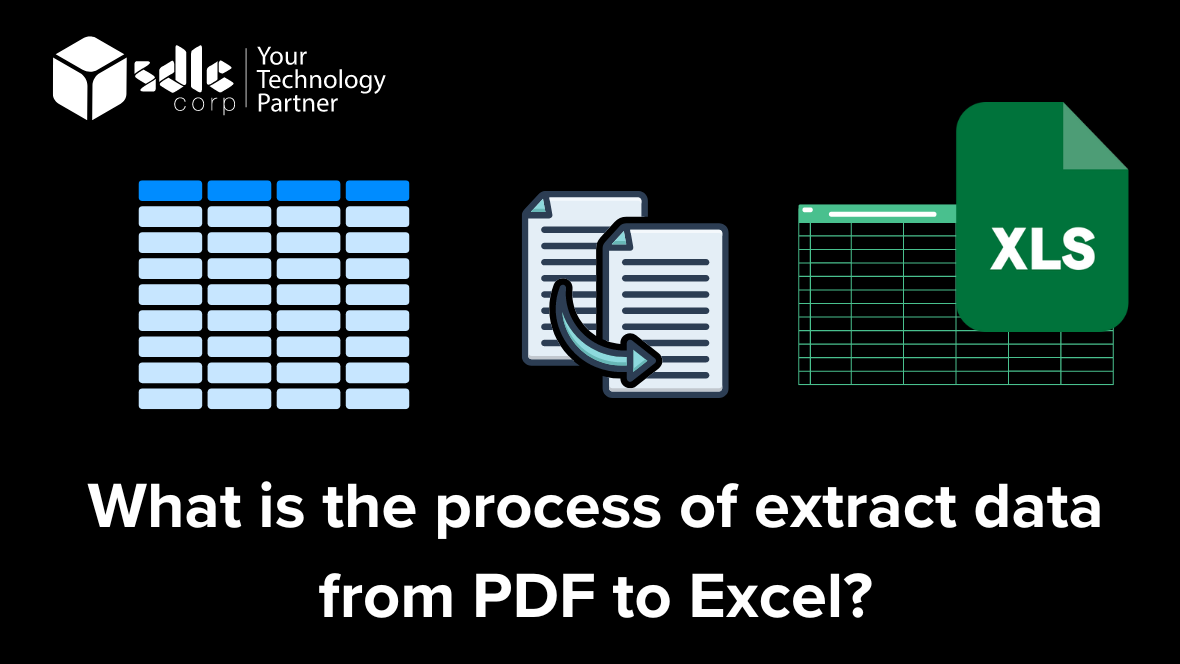How long does it typically take for an ACH transfer to be completed?
ACH (Automated Clearing House) transfers typically take 1-2 business days to process. However, the exact timing can vary depending on factors such as the financial institution’s processing times, the time of day the transfer is initiated, and any intermediary banks involved in the transaction.
When it comes to ACH transfers, understanding the timing is essential for managing cash flow and ensuring timely payments or receipts. Integrating tools like PDF image to text converters can aid in accessing and interpreting relevant information from documents or statements that provide details about ACH transfers, allowing for more accurate tracking and management of financial transactions.
A Brief Overview on ACH transfer times
ACH (Automated Clearing House) transfer times refer to the duration it takes for funds to move electronically between bank accounts within the United States. Typically, ACH transfers involve transactions like direct deposits, bill payments, or money transfers between accounts. The timeline for ACH transfers varies depending on factors such as the processing schedule of the involved financial institutions, the time of day the transfer is initiated, and any additional processing steps required.
Generally, ACH transfers can take anywhere from one to five business days to complete. Standard ACH transfers initiated before a certain cutoff time on a business day are often processed on the same day or the next business day. However, it’s important to note that transfers initiated later in the day or over weekends/holidays may take longer to process.
Integrating tools like PDF to Google Docs converters can aid in accessing and managing documentation related to ACH transfers, such as transaction records, statements, or payment instructions. This allows for efficient storage, retrieval, and collaboration on important financial information within Google Docs, enhancing overall financial management processes.
Moreover, financial institutions may impose their own processing times and hold periods for ACH transfers, which can affect the overall transfer duration. For urgent transfers, expedited ACH options are available from some banks, allowing for faster processing at an additional fee.
In summary, ACH transfer times can vary based on several factors, including the timing of the transfer initiation, the processing schedules of banks, and any additional processing steps involved. Understanding these factors can help individuals and businesses anticipate the timeline for ACH transactions.
Which kinds of ACH transfers are there?
There are several types of ACH transfers commonly used for different purposes:
Direct Deposit: Employers use direct deposit ACH transfers to pay employees’ salaries or wages directly into their bank accounts. This type of transfer eliminates the need for paper checks and offers convenience for both employers and employees.
Recurring Payments: ACH transfers are often used for recurring payments, such as utility bills, mortgage payments, subscription fees, or loan repayments. These payments are scheduled to occur automatically on a regular basis, providing convenience and consistency for both payers and recipients.
Vendor Payments: Businesses use ACH transfers to pay vendors and suppliers for goods or services rendered. This type of transfer streamlines the payment process, reduces administrative costs, and provides flexibility in managing cash flow.
Person-to-Person (P2P) Transfers: Individuals can use ACH transfers to send money to friends, family, or acquaintances electronically. P2P transfers are commonly used for various purposes, including splitting bills, repaying loans, or sending gifts.
Business-to-Business (B2B) Payments: ACH transfers facilitate B2B payments between businesses, allowing for efficient and secure transactions. This type of transfer is commonly used for paying invoices, settling accounts payable, or conducting business transactions.
Integrating web scraping with Python can provide valuable insights into ACH transfer trends, transaction volumes, or fee structures across financial institutions. By scraping data from banking websites or financial platforms, users can gather information to inform decision-making, optimize payment processes, or identify opportunities for cost savings.
How It Works?
ACH (Automated Clearing House) transfers work through a network that facilitates electronic funds transfers between bank accounts in the United States. Here’s an overview of how ACH transfers typically work:
- Initiation: The sender initiates an ACH transfer by providing their bank with instructions to transfer funds from their account to another recipient’s account. This instruction includes details such as the recipient’s bank account number, routing number, the amount to be transferred, and any relevant payment information.
- Transmission: The sender’s bank transmits the ACH transfer instruction to the ACH network. The ACH network is a secure system managed by the National Automated Clearing House Association (NACHA) that facilitates the processing and settlement of ACH transactions.
- Processing: The ACH network processes the transfer instruction and routes it to the recipient’s bank through the Federal Reserve or another ACH operator. The recipient’s bank receives the transfer instruction and credits the funds to the recipient’s account.
- Settlement: The ACH network coordinates the settlement of funds between the sender’s bank and the recipient’s bank. This process typically occurs through the Federal Reserve or another clearinghouse, where funds are transferred between banks’ reserve accounts to complete the transaction.
- Notification: Once the funds have been successfully transferred, both the sender and recipient receive notifications confirming the completion of the ACH transfer. This notification may be provided through online banking portals, email, or other communication channels.
"Decoding ACH Transfer Speed: Navigating Processing Times for Swift Financial Transactions."
What is the duration of an ACH transfer?
ACH transfers take between 3-4 business days, depending on the time of day and whether same-day/next-day processing has been used.
RDFIs who have the data ready with them can process transactions faster, but may wait if they sense that there is a risk of a return. For smaller transaction sizes, they might send the funds earlier, especially if the customer is seen as low-risk.
Errors can also interfere at times. Returns for insufficient funds are the most common error for debits. Credits, on the other hand, are more susceptible to things like wrong account numbers, wrong transfer amounts, closed accounts, and details that are mismatched.
Mistakes usually resulted in a delay of 1 to 2 days. To reduce error, fraud, and delays, NACHA added new regulations in 2021. They gave a requirement which basically requires that originators of transactions must verify that the recipient’s account is open, valid, and able to receive ACH transfers—before initiating an online ACH debit.
Further complicating the topic, the system works on a basis where failures are highlighted, but successful transactions are not announced. Hence, no transaction is ever really, specifically confirmed—and thus can later be reversed. If a transaction fails, the RDFI has up to 48 hours to report it.
In some situations, a transaction that has already been processed may not stay that way if it’s reported by the RDFI as a failed transaction later on. Consumers also have 60 days from the date of any statement containing an ACH debit transaction to dispute it with NACHA.
What is the price of an ACH transfer?
The cost of an ACH (Automated Clearing House) transfer can vary depending on several factors, including the financial institution you’re using, whether it’s a consumer or business transfer, and the type of ACH transaction (e.g., one-time payment, recurring payment, direct deposit).
Typically, ACH transfers are cheaper than wire transfers, but there may still be fees involved. Some banks offer ACH transfers for free as part of their standard account services, especially for consumer accounts. However, others may charge a small fee per transaction, especially for business accounts or for expedited transfers.
To get the most accurate information about the cost of an ACH transfer, it’s best to check with your bank or financial institution directly, as their fee structures can vary.
"Decoding ACH Transfer Speeds: Optimizing Transaction Times for Efficient Financial Management"
Advantages of ACH transfers:
Cost-effectiveness: ACH transfers are typically cheaper than other payment methods, such as wire transfers or paper checks. Many banks offer ACH transfers for free or at a low cost, making them an economical choice for both businesses and consumers.
Convenience: ACH transfers can be initiated online, through mobile banking apps, or through other electronic means, providing convenience for both senders and recipients. This eliminates the need for paper-based processes and reduces the time and effort required to initiate and process payments.
Security: ACH transfers are processed electronically through a secure network, reducing the risk of fraud and unauthorized access compared to paper-based payment methods. Additionally, ACH transactions are subject to strict regulatory standards and may offer protections such as dispute resolution processes.
Speed: While ACH transfers may not be as instantaneous as wire transfers, which are often used for same-day or urgent payments, they still offer relatively quick processing times. Most ACH transfers are completed within a few business days, making them suitable for non-urgent payments such as payroll, bill payments, and vendor payments.
Automation: ACH transfers can be set up for recurring payments, such as monthly bills or payroll deposits, allowing for automation and streamlining of regular financial transactions. This reduces the need for manual intervention and helps ensure timely and accurate payments.
Limitations on ACH transfers:
While ACH transfers offer numerous advantages, they also have some limitations, including:
Processing Time: ACH transfers typically take longer to process compared to other payment methods, such as wire transfers. While same-day ACH transfers are available for certain transactions, most ACH transfers can take one to three business days to complete, which may not be suitable for urgent payments.
Transaction Limits: Financial institutions often impose transaction limits on ACH transfers, both in terms of the maximum amount that can be transferred per transaction and the total amount that can be transferred within a certain timeframe. These limits can vary depending on the bank and the type of account.
Availability of Funds: Unlike wire transfers, which are typically processed in real-time and involve immediate debiting and crediting of funds, ACH transfers rely on batch processing and settlement schedules. As a result, funds transferred via ACH may not be available for immediate use by the recipient.
Reversals and Disputes: ACH transactions are subject to specific rules and regulations governing reversals and disputes, which may limit the ability of senders to cancel or reverse transactions once initiated. Disputes regarding ACH transfers may also take time to resolve, potentially causing delays in fund availability.
International Limitations: While ACH transfers can be used for domestic transactions within the United States, they are not typically available for international transfers. For cross-border payments, alternative methods such as wire transfers or international money transfer services may be required.
Security Risks: While ACH transfers are generally considered secure, they are not immune to fraud and unauthorized access. Cybercriminals may attempt to intercept ACH transactions or gain access to sensitive banking information, posing risks to both senders and recipients.
Alternatives to ACH transfers
Alternatives to ACH transfers offer diverse options for transferring funds efficiently and securely. Wire transfers, a widely used alternative, provide expedited delivery, making them suitable for urgent transactions, though they often come with higher fees. Peer-to-peer (P2P) payment apps like Venmo and PayPal offer instant transfers between individuals, ideal for everyday transactions and splitting bills. Virtual credit cards provide added security for online purchases by generating temporary card numbers. Traditional methods such as checks, while less common, remain viable for certain transactions, especially for businesses.
Online payment platforms like Stripe and Square cater to businesses, offering seamless payment processing and integration with e-commerce platforms. Additionally, cryptocurrency transactions provide decentralized, secure, and often swift transfers, though adoption varies. It’s crucial to consider factors like transaction fees, security, and speed when choosing alternatives to ACH transfers.
Using ACH payments to launch your company
Utilizing ACH payments to launch your company offers numerous advantages in terms of efficiency, security, and accessibility. ACH payments provide a convenient and cost-effective way to handle transactions, allowing businesses to accept payments electronically from customers’ bank accounts. This method reduces the need for paper checks, streamlines payment processing, and minimizes manual effort.
By incorporating ACH payments into your business model, you can offer customers a convenient and flexible payment option, improving their overall experience and increasing satisfaction. Additionally, ACH payments are typically more secure than traditional paper checks, reducing the risk of fraud and ensuring that funds are transferred safely and efficiently.
FAQs
1. What is the typical processing time for ACH transfers?
ACH transfers typically take one to two business days to process. However, the exact timeframe can vary depending on factors such as the timing of the transfer initiation, banking hours, and weekends or holidays.
2. Do ACH transfers take longer to process on weekends or holidays?
Yes, ACH transfers initiated over weekends or holidays may take longer to process. While transfers can be initiated at any time, processing usually occurs only on business days, leading to delays for transactions initiated outside of regular banking hours.
3. Can ACH transfers be expedited for faster processing?
Some financial institutions offer expedited ACH transfer services for an additional fee, allowing for faster processing. However, the availability of expedited options may vary depending on the bank and specific circumstances.
4. How can I track the status of an ACH transfer?
Many banks and financial institutions provide online banking services that allow customers to track the status of their ACH transfers in real-time. Customers can log in to their online banking accounts to view transaction details and monitor the progress of their transfers.
5. Are ACH transfer times consistent across all banks and financial institutions?
While most banks follow the standard one to two business day timeframe for ACH transfers, processing times may vary slightly between institutions. Factors such as internal processing schedules, policies, and technology infrastructure can influence the speed of ACH transfers at different banks.
Conclusion
In conclusion, ACH transfer times play a pivotal role in financial transactions, offering a balance between convenience and processing speed. While ACH transfers typically take one to two business days to complete, variations may occur due to factors like timing, banking hours, and weekends. Despite this slight delay compared to expedited options like wire transfers, ACH remains a preferred choice for its reliability, security, and lower costs. Businesses and individuals can leverage this payment method effectively by understanding and planning around its processing timeline. By incorporating ACH transfers into their financial strategies, they can streamline transactions, optimize cash flow, and provide customers with a convenient and efficient payment experience.
Contact Us
Let's Talk About Your Project
Free Consultation
24/7 Experts Support
On-Time Delivery
















